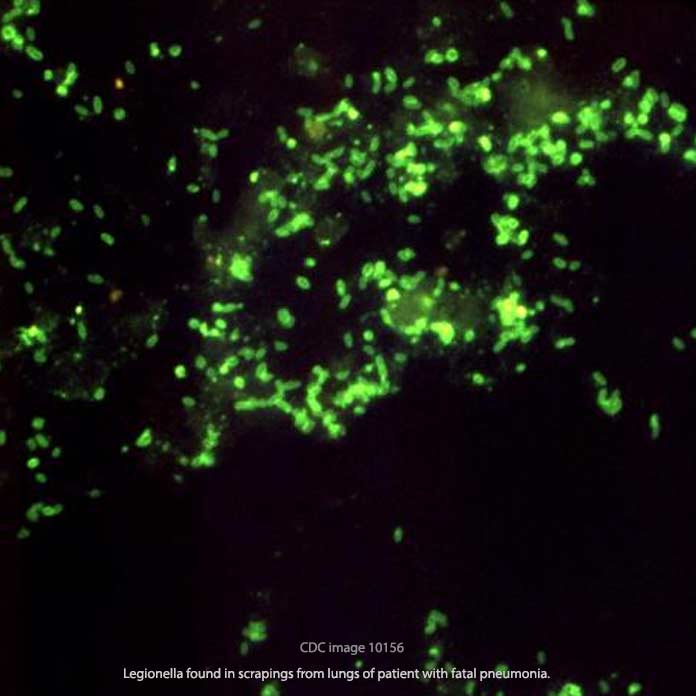In the wake of two serious Legionnaires’ disease outbreaks in June 2014 and May 2015 in Flint, Michigan, a new research study (1) has definitively demonstrated that city pipes corroded by the iron in Flint River water were ultimately responsible for the unusual proliferation of dangerous Legionella bacteria. Out of 87 reported cases of Legionnaires’ disease in Flint and its surrounding Genesee County, 10 people died.
The study, published in the American Chemical Society’s Environmental Science & Technology Letters, was authored by the Virginia Tech team that first sampled Flint’s water supply in October 2015, before the city switched back from the corrosive Flint River water to its original Lake Huron water. Headed by environmental engineer Marc A. Edwards, the Virginia Tech scientists were unaware at the time of sampling of the two Legionnaires’ disease outbreaks because of the failure of public health agencies to inform the public that these outbreaks had occurred (2); these outbreaks were not reported by Michigan Department of Health & Human Services (MDHHS) until December 2015.
Yet they knew that the conditions for Legionella proliferation were ripe, and so decided to test the water for Legionella, iron, and free chlorine. As the team’s environmental microbiologist Amy Pruden explains, “Lab-scale type studies have illustrated that corrosion in drinking water pipes can stimulate the growth of Legionella … Our team recognized that the conditions in Flint – a corrosive new water source in an aging water system – were just right for Legionella.” (2)
According to a summary of the research provided by Chemical & Engineering News (c&en), in homes supplied by Flint River water, Edwards’ team
“recorded Legionella concentrations roughly seven times as high as those found in the baseline surveys. The researchers measured a mean concentration of 1,890 gene copies/mL of L. pneumophila in the hospitals, about 470 times as high as the alert threshold of 4 gene copies/mL suggested by a recent study (Mol.Cell.Probes 2015, DOI: 10.1016/j.mcp.2014.09.002). In more than half the water samples from Flint, the researchers could not detect any chlorine, which they expected due to corrosion. The team reported no measurable iron in the baseline surveys and the control group of buildings using Lake Huron water, but found high levels of 51 ppb in the Flint homes and hospitals. No Legionella were detected in the buildings using Lake Huron water.” (2)
Janet E. Stout, director of the Special Pathogens Laboratory Pittsburgh (the premier Legionella testing laboratory in the U.S.), states that “This paper shows that the water quality disruptions in Flint directly contributed to the presence of Legionella bacteria and the disease cases that subsequently occurred.” (2). Based on the study – the first “to link pipe corrosion to risk of disease at the community scale,” she and Dr. Pruden are recommending that the Environmental Protection Agency (EPA) mandate required testing for Legionella bacteria in public drinking water systems.
Our law firm is not taking these cases.
Sources:
- Legionella DNA Markers in Tap Water Coincident with a Spike in Legionnaires’ Disease in Flint, MI. David Otto Schwake, Emily Garner, Owen R. Strom, Amy Pruden, and Marc A. Edwards. Environmental Science & Technology Letters Article ASAP DOI: 10.1021/acs.estlett.6b00192.
- Pelley, Janet. “Legionnaires’ outbreaks in Flint linked to corrosive tap water.” Chemical & Engineering News. Web. 25 Jul. 2016.
Our offices are located in Minneapolis, MN.
